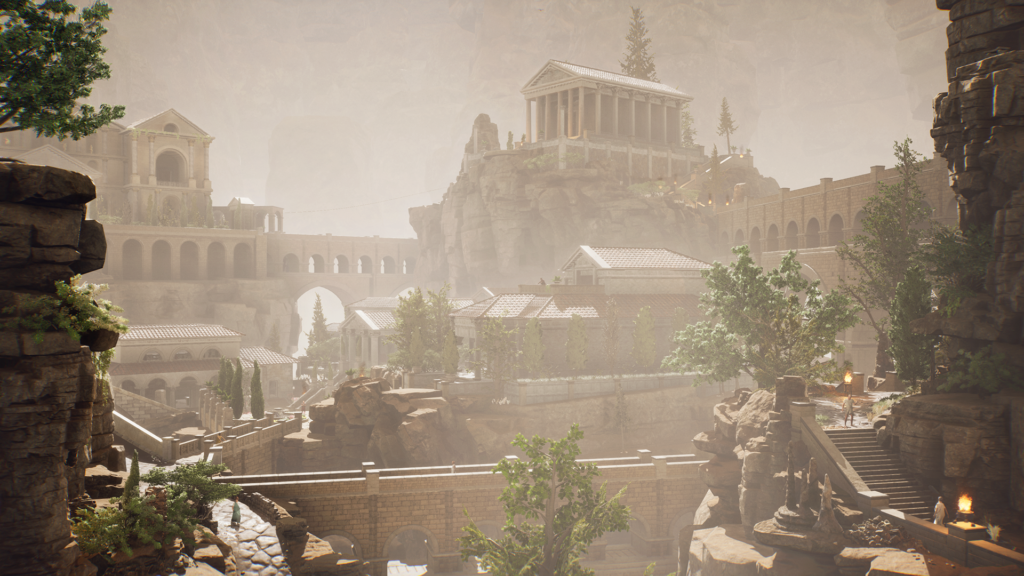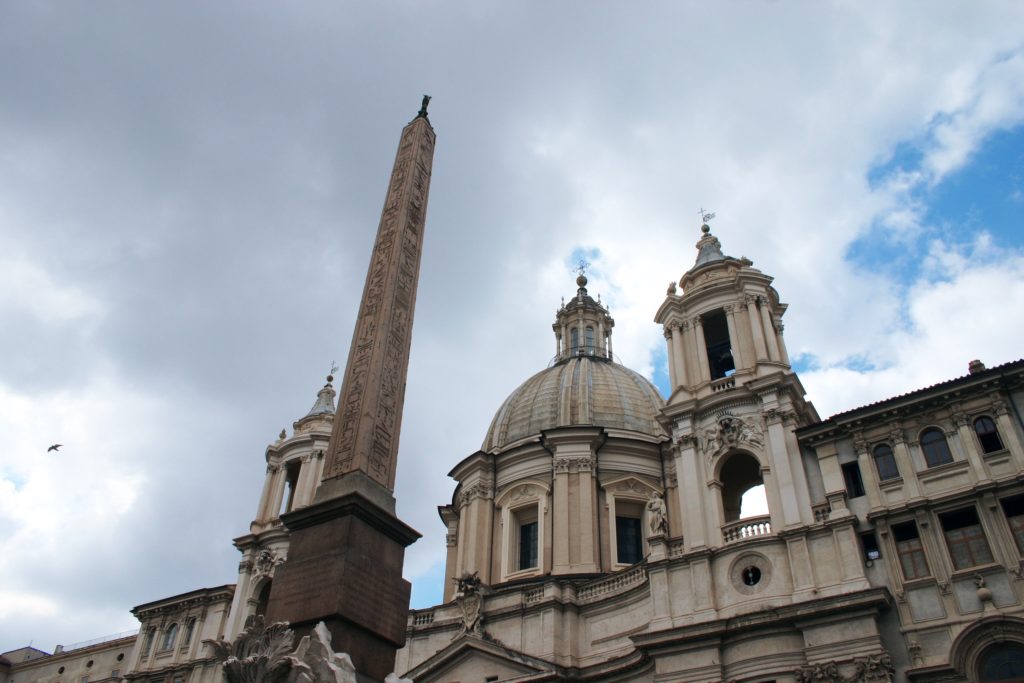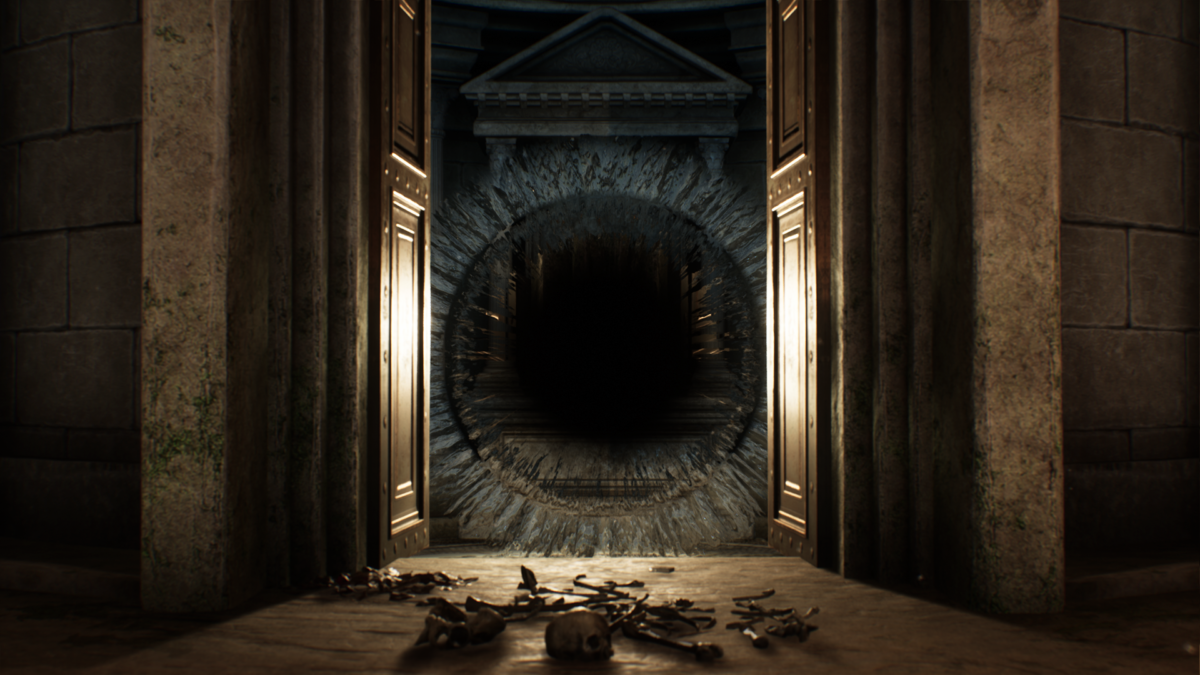SPOILER WARNING: This blog contains key plot details from The Forgotten City.
What do we do with memorials that make us uncomfortable? Recently there has been a collective reckoning with the physical reminders of contentious histories. The Black Lives Matter protests of 2020 targeted many statues and memorials with links to slavery. The question of what to do with the rest has become no less pressing. It’s not quite the topic one expects video games to grapple with, but The Forgotten City does just that. This critically acclaimed mystery-adventure game from Australian developers Modern Storyteller focuses on unravelling the distorted and many-layered history of its titular settlement. After awakening on the banks of the Tiber and travelling back in time through a mysterious portal the player must explore a meticulously detailed Roman city to find out how to escape – and it’s understanding the city’s past that holds the key.

The game’s narrative has many strands, one of which centres on a mysterious obelisk in front of the city’s largest temple. The temple’s deity is unknown, as the obelisk has been vandalised and identifying plaques removed from its base – it’s these that you need to find. The only clue is the fact that each side is decorated in a different style: Roman, Greek. Egyptian, and the fourth is one which (I suspect) few players will recognise.
The obelisk is interesting from a historical standpoint, as already its presence could be read as contentious. Originally Egyptian, the Romans took several obelisks from Egypt as they expanded their Empire, bringing them to Rome and incorporating their original meanings into a Roman context (Pieper and Ker, 78-79). Even in this Roman city contentious histories of colonialism and stolen art are woven into the built environment. So, what happened to the obelisk’s missing plaques, and what does their fate reveal about the city’s attitudes to this monument – and the past it represents?

The Roman plaque, it transpires, was taken by Christians who, the local priestess says, frequently ‘…deface religious monuments whose existence challenges their beliefs’ (this plaque bears the words ‘Pluto, Father of Riches’, contradicting the Christians belief in one true God).
The Greek plaque (inscription: ‘Hades, Lord of Many’) is stored in the city, but the reason for its removal is to be found elsewhere. Although the city is Roman, the oldest shrine is clearly Greek. Beneath this is a cavern containing Greek artefacts and a hermit, who reveals that a Greek settlement predated the Roman city. The Greek plaque was removed from the obelisk by the Roman settlers, in a quest to erase Greek culture. The hermit describes how the Greeks had thought the Romans barbaric for the way they carelessly erased or appropriated Greek heritage, and hid the rest of their artefacts to protect them.
In the process of hiding their things the Greeks came across the Egyptian plaque (inscription: ‘Osiris, Lord of Silence’). It turns out that this plaque was removed by the original Greek settlers – who were in fact just as barbaric about destroying and appropriating heritage as the Romans would be. And that’s not all: beneath the Greek cavern are the ruins of a full Egyptian city, destroyed and abandoned.
In the ruins of this city the player encounters Khabash. Khabash comes from Rhacotis, in Egypt, which the Greeks conquered and renamed Alexandria, before the Romans subsequently took hold. Khabash has, understandably, a bit of a grudge against the Romans and Greeks because they not only colonised Egypt but also, in his words, ‘copied and corrupted’ Egypt’s beliefs. By now it’s clear that although each resettlement of the city has removed a plaque from the obelisk and replaced it with their own, they have all been adaptations of the same God – the God of the Underworld. Osiris became Hades, who in turn became Pluto.
Khabash has maintained his belief that Osiris is the ‘true’ version, but now he has a problem. He has found the fourth plaque, older than the Egyptians’, and inscribed with the name of the Sumerian God of the Underworld: ‘Nergal, The Fierce One’. Having cursed the Romans and Greeks for erasing and appropriating their past, renaming their Gods and destroying their memorials, Khabash now realises that the Egyptians have in fact done exactly the same thing themselves. Sure enough, as the player explores further, Sumerian ruins are revealed beneath the Egyptian ones.
In the real world, every generation is responsible for some amount of cultural erasure – sometimes this happens violently, but usually simply as part of how societies evolve over time. When the removal of monuments which no longer fit our cultural values is criticised as erasing the past or rewriting history, critics are forgetting that the people commemorated in those monuments acted in precisely the same way. Any memorial is simply a snapshot of a single time, and the landscapes of memory are constantly being overwritten.
In The Forgotten City, each rewriting of the landscape is stacked on top of the old one, visible for us to see. The player is able to unravel the history of the city by working through the layers, encountering first one story of conquest and erasure, then another (and another). All of them are equally important, each forming a key part of the city’s story. The trick is to understand that there is no single ‘correct’ interpretation, nobody is perfect, and nobody is innocent. It might not be possible to explore real landscapes of memory in the same way, but the story they tell is just the same.
Flossie Kingsbury is a postdoctoral research associate for WISERD / Aberystwyth University, exploring responses to cultural change and political chaos through the lens of contemporary civil society and polarisation. She’s interested in understanding how the past impacts the values and attitudes of the present, particularly in relation to contested histories of empire and colonialism, and the role of nostalgia. She’s also a keen gamer & writer. https://flossiekingsbury.com
*With thanks to Charlie Kingsbury for his comments and feedback.
References
Pieper, C and Ker, J. (2014) ‘The Egyptian Past in the Roman Present’. In Ker, J. and Pieper, C. (eds.) Valuing the Past in the Greco-Roman World: Proceedings from the Penn-Leiden Colloquia on Ancient Values VII. Brill: Leiden; Boston
